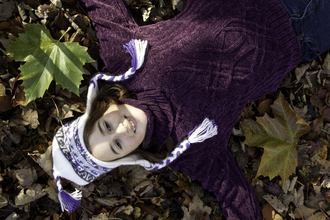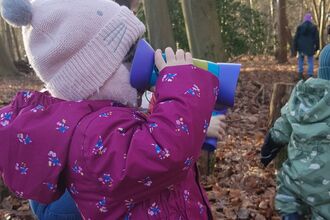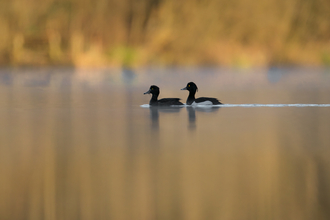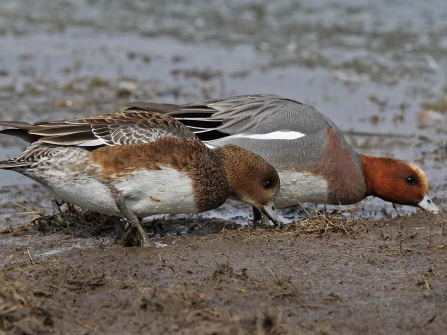
Where to go in October
Bowdown Woods by Rob Appleby

College Lake, Bucks
October is a great time to visit College Lake nature reserve. It's when the birds that spend the winter here start to arrive and summer visitors are leaving so there is plenty to see.
Take a walk around the entire lake or stroll down to one of the many bird hides and sit quietly to watch life out on the lake. Round off your visit with a drink in the cafe that overlooks the lake too.
Access: Gentle slopes, 90% surfaced paths, gates, benches. Some wheelchair access, including hides; two mobility Tramper vehicles are available to use - contact us on 01442 826774 or collegelake@bbowt.org.uk to book.
Discover the fascinating world of fungi with the Bucks Fungus Group at College Lake on Saturday 4 October! Find out more about this free event via the link below.
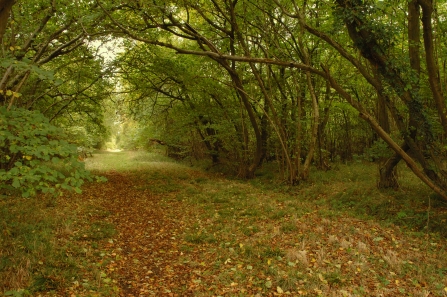
Rushbeds Wood, Bucks
Most of the trees here were felled in the late 1940s, and only a handful of mature oaks remain. Today's 'wild wood' is a mixture of ash, field maple, aspen, hazel and oak along with blackthorn, hawthorn, spindle and a few old hornbeams. The woodland is damp and tussocky with a wide variety of sedges, grasses and rushes (hence the name).
Follow the circular Wildlife Walk and look out for fungi on the woodland floor. You might find species with wonderful names including deceiving knight, amethyst deceiver, lilac fibrecap and fluted bird's-nest.
Access: Paths flat, soft after rain, some roots; kissing gates, bench
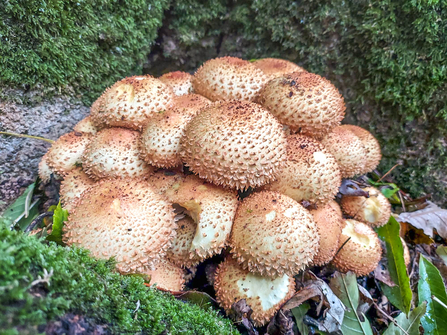
A cluster of shaggy scalycap mushrooms / fungus at BBOWT's Snelsmore Common reserve. Picture: Colin Williams
Snelsmore Common, Berks
Snelsmore Common in West Berkshire is an interesting mix of woodland, heathland and wet mires which makes it home for lots of different wildlife. Autumn sees a wide range of fungi emerge including the red and white toadstool of fairytales, the fly agaric.
Over 75% of the lowland heath like that at Snelsmore Common has been lost in the last 150 years and as a result many birds and other animals that live here are nationally very rare.
Print our crayon rubbing trail and take it with you when you visit to discover more about the special heathland wildlife here. A great activity for children to enjoy during half-term!
Access: The common is dissected by a number of valley mires so some paths are steep and uneven. A paved circular path 0.75 miles, the Easy Access Trail, is fully accessible by pushchairs and wheelchairs (RADAR key required to fully open gate).
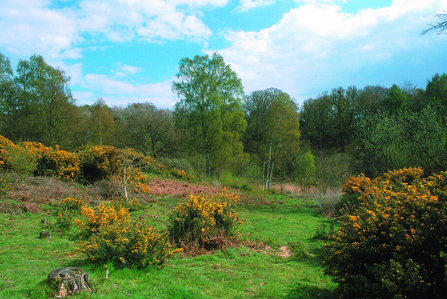
Sydlings Copse - Jim Asher
Sydlings Copse, Oxon
Tucked away to the north-east of Oxford, near Barton, Sydlings Copse is a treasure trove for wildlife enthusiasts all year round with lots of different habitats to explore.
During the autumn a profusion of fungi erupts from the woodland floor, as well as the limestone grassland. Trees and shrubs are laden with berries and leaves are turning to shades of gold, orange and bronze.
Access Sloping; flat sections, steep slopes, soft patches; kissing gate, steps. Not suitable for pushchairs.
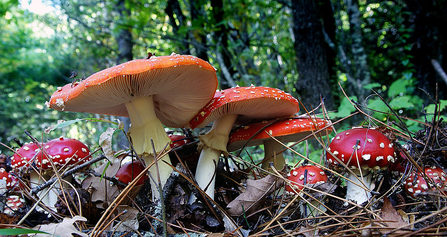
Fly agaric mushrooms growing in leaf litter. Picture: Bernard Spragg CC PDM 1.0
Warburg Nature Reserve, Oxon
This nature reserve nestled in the Chilterns is great to get away from it all. Filled with autumn colour from the beechwoods and fungi, there's plenty to discover as you explore. An incredible 900 species of fungi have been recorded here including the black-and-white magpie inkcap, saffrondrop bonnet which oozes a bright orange liquid from its stem and shiny puffballs.
Follow the circular Wildlife Walk for a short exploration of the reserve or follow the many paths to discover more.
Access: Variable, mostly steep paths and loose flint, flat grassy path; muddy in valley bottom after rain; benches.
A mobility Tramper vehicle is available to hire Tuesday-Thursday, subject to staff availability. Please email warburg@bbowt.org.uk or call 01865 788311 to book in advance.
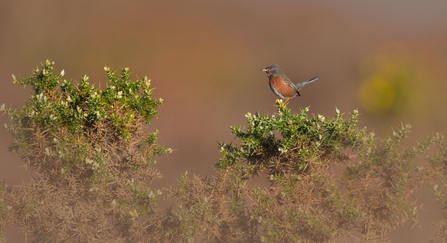
Dartford warbler by Jon Hawkins - Surrey Hills Photography
Wildmoor Heath, Berks
Wildmoor Heath is a precious area of rare heathland habitat in Berkshire, and home to a rich, but fragile, community of fungi, insects, reptiles, birds, mosses and flowering plants. You might spot heathland as well as woodland fungi including brown birch bolete and orange birch bolete.
Access: Variable, mainly firm, gently sloping, sandy paths, some boggy peat, some rough underfoot, can be very muddy in winter; gates, stiles, boardwalks
Wherever you visit this month, please make sure to leave any fungi in place on our nature reserves for others to enjoy another time.


